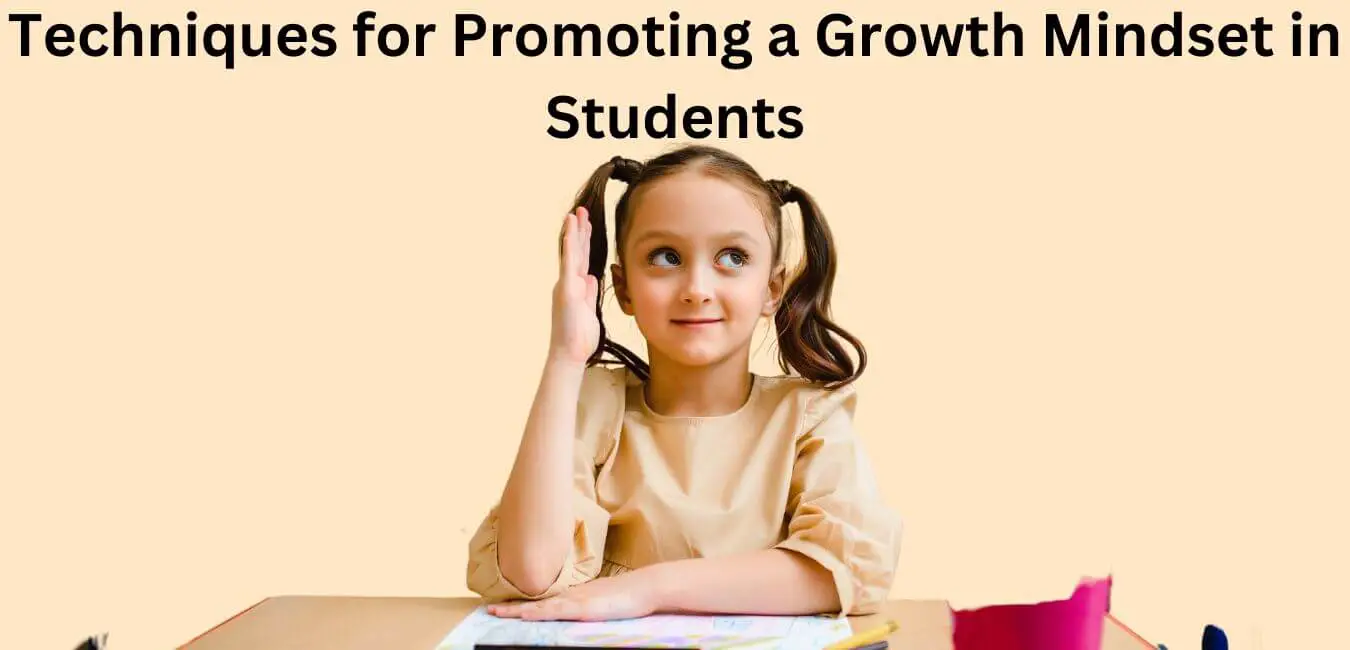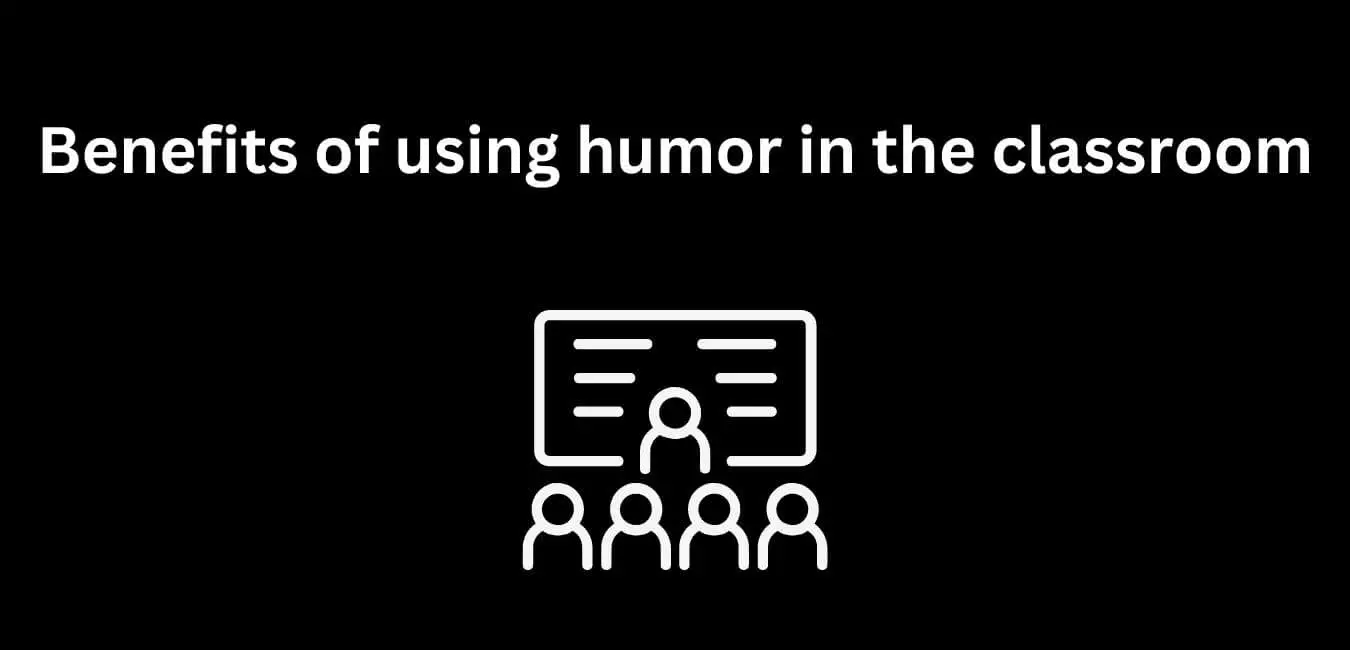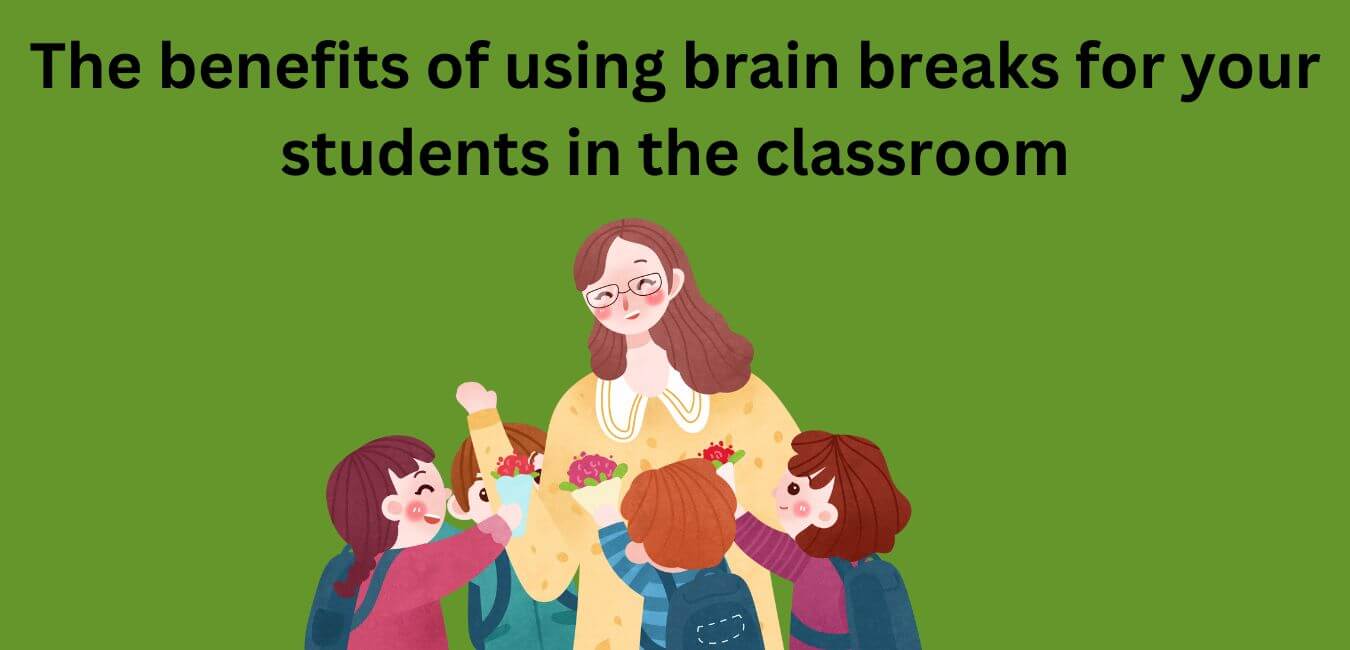As an educator, my objectives for students encompass:
- Establishing a firm grasp of fundamental concepts in subjects such as mathematics and language arts.
- Fostering critical thinking through the cultivation of inquiry and problem-solving abilities.
- Encouraging self-reliance and personal growth.
- Instilling a sense of social and environmental consciousness.
- Guiding them towards future preparedness.
Through laying a groundwork in academic proficiencies, nurturing critical thinking skills, supporting individual development, promoting social awareness, and preparing for upcoming challenges, students can excel across various facets of their lives.
Read further for more of my goals for my students in my classroom.
What Are My 25 Goals for Students as a Teacher?
Establish Strong Basics
I make sure that students grasp fundamental concepts in subjects like mathematics, language arts, and science. Understanding these concepts is crucial as they form the basis for all future learning. By ensuring students have a strong foundation in these areas, we set them up for success in developing skills and analytical thinking.
Engagement plays a vital role in learning. As an educator, my goal is to cultivate an environment that fosters engagement. Through interactive activities, real-world examples, and hands-on experiences, I strive to spark curiosity and a love for the subjects being taught.
When students have a solid grasp of basic concepts, they’re better prepared to tackle more challenging problems. Mastering these fundamental principles gives students the confidence to approach difficulties with a critical mindset. Encouraging critical thinking from an early stage empowers students to question, evaluate, and think independently.
Develop Critical Thinking Skills
Encouraging students to develop critical thinking skills involves nurturing their ability to question and analyze the world around them. Emphasizing analytical thinking and problem-solving equips students with valuable tools to tackle complex challenges.
Integrating debating skills and logical reasoning into the curriculum prompts students to explore diverse perspectives and bolster their own arguments.
Socratic questioning and inquiry-based learning methods encourage students to delve deeper into topics, fostering a more profound understanding of the subject matter.
Reflection exercises and critical analysis assignments offer students opportunities to assess their thinking processes and enhance their cognitive growth. Encouraging students to challenge assumptions and beliefs helps instill a habit of questioning the norm.
Through these approaches, a classroom environment where curiosity thrives is cultivated, empowering students to actively participate in their learning journey. Ultimately, fostering critical thinking skills prepares students to think independently and navigate a rapidly evolving world with confidence.
Cultivate a Love for Learning
Cultivating a love for learning involves sparking a passion that goes beyond the classroom walls. As an educator, my aim is to inspire a lasting love for education in my students, nurturing a thirst for knowledge that will endure long after their school days.
To achieve this, I focus on:
- Creating a Culture of Lifelong Learning: Encouraging students to view education as a continuous journey that extends outside the classroom. This outlook motivates students to actively seek knowledge in various ways and settings.
- Inspiring Classroom Enthusiasm: Infusing lessons with energy and creativity to ignite curiosity and engagement. By making learning enjoyable and relevant, students are more likely to develop a genuine affection for education.
- Supporting Learning Beyond the Classroom: Providing opportunities for students to explore topics of interest beyond the standard curriculum. Through extracurricular activities, independent research, and community involvement, students can grasp the practical value of education in real-world scenarios.
Enhance Communication Skills
Improving spoken and written communication skills is key for navigating various situations successfully. To enhance these skills, I incorporate a variety of activities in my classroom.
Role playing exercises allow students to understand different perspectives, boosting their empathy and capacity to communicate effectively in diverse scenarios. Engaging in debate competitions gives students a platform to present their thoughts persuasively and analyze different viewpoints critically.
Workshops on public speaking help students gain confidence in expressing their ideas in front of others. Peer feedback sessions encourage active listening and constructive criticism among classmates, fostering a collaborative environment for continual improvement.
Additionally, written communication tasks like essay writing and journaling aid students in expressing their thoughts clearly on paper. Through these activities, students develop the communication skills needed to thrive in academic and real-world settings.
Promote Collaborative Learning
In my teaching approach, I emphasize the significance of collaborative learning to equip students with skills for excelling in team environments. Understanding how to work effectively in a team is crucial for students as they progress in their academic and professional journeys. By fostering collaborative success, I aim to instill in them the value of collective achievements over individual accomplishments.
Here are three key aspects I focus on to promote group synergy and effective partnerships:
- Encouraging Active Participation: I provide opportunities for each student to contribute their unique strengths and ideas, fostering a sense of belonging and shared responsibility within the team.
- Teaching Effective Communication: I stress the importance of clear and respectful communication to prevent misunderstandings and enhance cooperation among team members.
- Fostering Mutual Respect: I cultivate an environment where students respect each other’s perspectives and differences, creating a foundation for a team environment built on trust and support.
Encourage Creative Thinking
To spark students’ creativity and encourage them to think imaginatively when solving problems, I prompt exploration of unconventional solutions. Imagination is key to developing creative problem-solving skills. I challenge students to step outside their comfort zones and consider innovative approaches, aiming to inspire them to tackle challenges from new angles. Incorporating art and creative exercises into lessons is a powerful way to stimulate their imaginations and nurture their creativity.
Encouraging critical thinking is crucial for empowering students to approach problems creatively. By urging them to analyze situations from different perspectives and explore diverse possibilities, I help them cultivate the skills necessary to generate unique and effective solutions. Through this method, my goal is to instill in students a sense of confidence in their creative abilities and a willingness to embrace creative thinking as a valuable tool for overcoming obstacles.
Support Emotional Intelligence
Guiding students to effectively manage their emotions and understand empathy is crucial for nurturing their emotional intelligence. As an educator, supporting emotional intelligence involves developing skills that extend beyond academic knowledge.
Here are three ways I strive to assist my students in this aspect:
- Emotion Regulation and Empathy Cultivation: Encouraging students to recognize and communicate their emotions in a healthy manner, while also fostering empathy and compassion towards others.
- Social Skills and Emotional Awareness: Creating opportunities for students to participate in group tasks that emphasize cooperation, communication, and conflict resolution, enhancing their emotional intelligence in social environments.
- Mindfulness Techniques and Self-Reflection: Introducing mindfulness practices to help students stay present, self-aware, and attuned to their emotions, fostering a sense of tranquility and introspection.
Foster Independence
Setting tasks that encourage independent learning and critical thinking plays a crucial role in nurturing student independence within the academic environment. Empowering learners to think autonomously and prompting them to seek out information are fundamental steps in fostering their growth as critical thinkers. Through these assignments, we not only support their academic progress but also cultivate independence that extends far beyond the confines of the classroom.
Encouraging independent learning is vital for student development as it enables individuals to take charge of their education and become self-reliant thinkers.
By offering students opportunities to explore topics on their own and formulate their conclusions, we’re promoting autonomy and ultimately contributing to their successes.
Cultivating individuals who can analyze, evaluate, and innovate won’t only benefit the students themselves but also society at large.
As educators, our aim is to guide students towards becoming lifelong learners who can navigate the complexities of the world with confidence and proficiency.
Embrace Diversity
Embracing diversity in education involves actively engaging with various cultures and perspectives to create a more inclusive learning environment. As a teacher, it’s crucial to instill in students the importance of cultural appreciation and global awareness. To achieve this, I focus on the following key aspects:
- Cultural Awareness: Creating inclusive classrooms where every student feels welcomed and valued allows us to appreciate the richness that different cultures contribute to our learning community.
- Inter-Cultural Understanding: Encouraging students to build empathy helps them understand and respect perspectives that may differ from their own, fostering tolerance and acceptance.
- Multicultural Learning: By promoting multicultural education, we aim to cultivate global citizenship and cultural sensitivity among students, equipping them to thrive in a diverse world.
Instill Good Study Habits
In my educator role, I make it a priority to help students develop effective study habits through personalized guidance on creating study schedules and establishing achievable goals. I focus on teaching time management, study skills, goal setting, task prioritization, and study schedules to provide students with the necessary tools for academic success.
Assisting students in allocating time for different subjects and tasks, encouraging them to set specific and realistic goals, and teaching them how to identify and prioritize important tasks are key components of instilling good study habits. These practices lay the foundation for students to excel in their academic pursuits and build a strong educational framework.
Provide Tech Literacy
I prioritize empowering students with crucial tech literacy skills to thrive in today’s world. Embracing technology education is essential for preparing students for the demands of the digital era. Here are some key aspects I focus on to ensure students are proficient with technology and digital tools:
- Overcoming Tech Literacy Challenges: I assist students in overcoming any initial hurdles they may encounter when learning to use new technologies, helping them feel confident and capable.
- Developing Digital Tools Proficiency: I support students in mastering a variety of digital tools, equipping them with the skills necessary to excel in their academic and professional pursuits.
- Acquiring Modern World Skills: By emphasizing the importance of digital literacy, I empower students to adapt to the ever-evolving technological landscape, enabling them to remain competitive in today’s world.
Through a comprehensive approach to teaching tech literacy, my goal is to provide students with the essential skills needed to succeed in today’s technology-driven society.
Teach Time Management
Helping students effectively manage their time for studies and extracurricular activities is crucial for academic success.
As an educator, my goal is to provide students with essential time management strategies to support their overall well-being.
One key aspect is teaching students how to prioritize tasks efficiently. Guiding them to recognize urgent and important responsibilities enables them to allocate their time wisely and prevent feeling overwhelmed.
I also stress the significance of balancing commitments. Encouraging students to design schedules that account for both academic tasks and extracurricular pursuits is essential for their success. Teaching them to set boundaries and prioritize self-care by saying no when needed and scheduling time for relaxation fosters a healthy approach to time management.
Furthermore, I collaborate with students to develop strategies to avoid procrastination. Instilling habits of addressing tasks promptly and breaking them down into manageable steps can enhance their productivity and reduce stress. Through these efforts, I aim to empower students to seize control of their time and achieve success in all aspects of their lives.
Support Physical Health
To enhance students’ overall well-being, guiding them towards practices that boost physical health is crucial. As an educator, supporting physical well-being involves the following strategies:
- Teaching about Nutrition: Educating students on balanced diets and making healthy food choices is essential for their physical wellness.
- Promoting Fitness: Encouraging students to participate in regular physical activity helps them develop strength, endurance, and overall well-being.
- Encouraging Healthy Habits: Instilling routines like staying hydrated, getting sufficient sleep, and practicing good hygiene contributes to students’ physical health and wellness.
Promote Digital Citizenship
Promoting responsible internet and social media usage plays a crucial role in building digital citizenship among students. As an educator, I prioritize teaching online safety, cyber etiquette, awareness of digital footprints, social media responsibility, and internet etiquette training to empower students to navigate the digital world responsibly and ethically.
Ensuring online safety is essential in today’s interconnected world. I educate students on safeguarding their personal information and being cautious when engaging online. Cyber etiquette, or netiquette, helps students learn how to communicate respectfully and effectively in digital spaces. Moreover, raising awareness about their digital footprint enables students to grasp the lasting impacts of their online activities.
Guiding students on social media responsibility involves helping them engage positively on social platforms and address challenges like cyberbullying. Training in internet etiquette equips students with the skills to participate constructively in online discussions and engage responsibly in digital communities. By promoting these aspects of digital citizenship, my goal is to prepare students for successful and safe navigation in the digital landscape.
Strengthen Problem-Solving Abilities
All teachers aim to give their students opportunities to tackle complex problems and find solutions.
When guiding students to enhance their problem-solving skills, I create opportunities for them to tackle intricate problems and discover solutions. This involves involving students in various activities that challenge their critical thinking abilities and encourage them to think creatively.
Here are some strategies I employ to improve their problem-solving skills:
- Interactive Workshops: I arrange workshops where students collaborate to solve real-world problems, promoting teamwork and analytical thinking.
- Challenging Puzzles: By introducing students to complex puzzles, I encourage them to break down problems into smaller, more manageable parts, refining their problem-solving approaches.
- Critical Thinking Scenarios: I present students with thought-provoking situations that require them to evaluate information, make inferences, and propose innovative solutions.
Through these methods, I aim to cultivate students’ innovative problem-solving techniques, equipping them to approach challenges with confidence and ingenuity.
Encourage Reading
Fostering a habit of regular reading for pleasure and information is one of my goals for my students.
When guiding students to enhance their problem-solving skills through interactive workshops and critical thinking scenarios, fostering a habit of regular reading for pleasure and information naturally extends their learning journey.
Encouraging students to read not only enhances their vocabulary and comprehension but also broadens their perspectives and understanding of the world around them.
To support this effort, I employ various reading strategies, provide tailored book recommendations, offer diverse reading materials, and monitor their progress through reading logs.
Additionally, I inspire students with reading rewards to acknowledge their achievements and maintain their motivation. Here’s a summary table highlighting key aspects of promoting reading:
| Aspect | Description |
|---|---|
| Reading Techniques | Use methods to enhance reading comprehension and retention |
| Book Suggestions | Recommend engaging books based on students’ interests and reading levels |
| Reading Tasks | Offer a variety of reading materials to expand students’ literary horizons |
Build Confidence
I always try and aim to create opportunities for success that help students gain confidence in their abilities.
To help students build confidence in their abilities, I design a range of achievable challenges that foster growth and self-assurance. It’s crucial for students to have a strong sense of self-esteem to believe in their potential and skills.
Here are three key strategies I use to cultivate confidence in my students:
- Encouraging Taking Chances: I create a supportive and safe space where students are encouraged to step out of their comfort zones. By promoting risk-taking, I help them understand that mistakes are a natural part of the learning journey and not something to dread.
- Offering Positive Feedback: Recognizing and applauding students’ efforts and accomplishments is vital for boosting their confidence. I make sure to acknowledge their progress and celebrate even the smallest victories.
- Nurturing a Growth Mindset: I instill in students the belief that with dedication and hard work, they can develop their abilities. By fostering a growth mindset, I help them see challenges as opportunities for growth and improvement, rather than signs of failure.
Through these methods, I aim to cultivate resilience and perseverance in my students, guiding them towards becoming confident and capable individuals.
Teach Financial Literacy
I assist students in grasping the fundamental concepts of managing finances, saving, and investing to promote financial literacy. Understanding budgeting basics, investment strategies, financial planning, money management, and saving tips early on is crucial for making informed decisions about one’s financial future. By equipping students with these essential skills, I aim to empower them to confidently navigate the complexities of personal finance.
Teaching budgeting basics involves helping students create and adhere to a budget to effectively manage their income. Introducing different investment strategies allows students to explore ways to grow wealth through avenues like stocks, bonds, and real estate. Financial planning guides students in setting financial goals and developing a roadmap to achieve them. Educating on money management involves teaching wise money-handling practices, including understanding expenses and income. Providing saving tips includes strategies like regularly setting aside a portion of income.
Empowering students with financial literacy not only prepares them for their future but also fosters a sense of responsibility and independence. It sets them on a path towards financial stability and success.
Focus on Lifelong Skills
Teachers always aim to equip students with skills like resilience and adaptability that are useful throughout life.
Equipping students with skills such as resilience and adaptability lays a solid foundation for effectively managing life’s challenges. As an educator, my focus is on developing lifelong skills that extend beyond the classroom, empowering students to confidently navigate the complexities of the world. Here are some key approaches I take to achieve this goal:
- Resilience Training: Providing opportunities for students to learn how to bounce back from setbacks and cultivate a growth mindset, fostering the resilience necessary to overcome obstacles.
- Adaptability Exercises: Engaging students in various activities that promote flexibility and problem-solving, nurturing their ability to thrive in dynamic environments.
- Life Skills Development: Teaching essential life skills such as time management, communication, and decision-making, equipping students with the necessary tools for success in both academic and personal/professional spheres.
Promote Environmental Stewardship
Teaching the importance of conservation and respect for the environment is one of the goals of teachers for their students.
When it comes to shaping students’ environmental responsibility, it’s crucial to instill a profound appreciation for conservation and respect for the natural world. Incorporating eco-friendly efforts, conservation education, environmental awareness, sustainable practices, and a love for nature into the curriculum can empower students to become guardians of the environment. Through hands-on activities like recycling programs, community clean-ups, and gardening projects, students not only learn about the significance of environmental conservation but also cultivate a sense of duty toward the planet and all its inhabitants.
Implementing recycling programs, educating students about endangered species, and raising awareness about climate change are just a few ways to foster environmental stewardship. Reducing waste through composting, teaching the importance of biodiversity, and discussing the impact of pollution are also effective strategies. Encouraging energy-saving practices, exploring ecosystems and their interconnectedness, and promoting sustainable living habits can further enhance students’ understanding and commitment to environmental preservation.
Incorporating these elements into education not only benefits the environment but also nurtures empathy, responsibility, and a sense of global citizenship in students. This prepares them to be conscientious leaders of tomorrow, ready to make a positive impact on the world around them.
Cultivate Leadership Qualities
Teachers often aim to encourage students to take on leadership roles and understand the responsibilities that come with it.
Encouraging students to take on leadership roles involves nurturing a sense of responsibility and recognizing the influence they can have on others. Providing avenues for students to enhance their leadership skills is crucial:
- Leadership Development: Implement mentorship programs to assist students in refining their leadership abilities and realizing their capacity to positively impact others.
- Team Building: Engage students in collaborative projects that promote teamwork, communication, and decision-making skills, fostering leadership in a supportive setting.
- Responsibility Training: Use role-playing scenarios to help students understand the significance of accountability and ethical decision-making in leadership positions.
Support Positive Behavior
Teachers always to reinforce good behavior and decision-making skills among students.
Supporting positive behavior involves reinforcing good conduct and honing decision-making skills to cultivate a conducive learning environment. Creating a classroom atmosphere where students feel empowered to make positive choices and develop essential skills is a priority. Recognizing and rewarding good behavior motivates students to stay on track. Providing opportunities for skill-building and emphasizing critical thinking in decision-making empowers students to navigate challenges effectively.
Encouraging good conduct through rewards and praise, fostering a supportive environment for students to thrive, and acknowledging and appreciating students’ efforts are key components of positive behavior support in the classroom. These practices help students build confidence, learn valuable skills, and contribute to a positive and productive learning environment.
Encourage Artistic Expression
Teachers provide platforms for students to express themselves artistically, whether it’s through music, art, or drama.
To foster students’ creativity and self-expression, it’s crucial to offer opportunities for artistic exploration in music, art, or drama. Creative expression enables students to connect with their emotions and ideas, promoting personal development and confidence.
Here are three ways I support artistic expression in my classroom:
- Artistic Freedom: Granting students the autonomy to select their artistic mediums and subjects empowers them to convey their true selves.
- Music Exploration: Through music, students can communicate emotions that words alone may not capture. I promote music appreciation and composition to expand their creativity and understanding.
- Drama Showcase: Hosting drama showcases gives students a platform to showcase their acting talents, storytelling skills, and emotional depth. This boosts their confidence, public speaking abilities, and nurtures teamwork and creativity.
Guide Career Exploration
Teachers help students understand their interests and potentials regarding future careers.
When guiding students in exploring career paths, I aim to uncover their interests and potentials for the future. As an educator, I believe in fostering career readiness and providing guidance for students to explore their passions. By helping them assess their interests and introducing them to various career options, I support them in planning for their future aspirations. This process allows students to discover potential paths that resonate with their strengths and interests, guiding them towards a fulfilling career.
I derive immense satisfaction from assisting students as they navigate the journey of career exploration. By promoting curiosity and self-discovery, my goal is to empower them to make well-informed decisions about their future endeavors.
Build Moral Character
While exploring different career paths, it’s crucial to instill values like honesty, integrity, perseverance, and respect in students’ moral character.
In my classroom, character development goes beyond academics to equip students to tackle ethical dilemmas with courage and integrity. To achieve this, I employ various strategies:
- Moral values: Through role-playing scenarios, students actively participate in decision-making processes that prompt them to consider the consequences of their actions on themselves and others.
- Integrity education: Real-life instances serve as powerful illustrations to emphasize the significance of honesty and integrity in all areas of life, helping students grasp the importance of staying true to their principles.
- Respectful interactions: Peer feedback sessions establish a supportive environment for students to learn from each other, nurturing a culture of mutual respect and understanding in the classroom.
Conclusion
As a teacher, my goals for students resemble seeds in a garden. I strive to nurture and cultivate their growth, assisting them in blossoming into confident, inquisitive learners.
Through establishing a solid foundation, fostering critical thinking, and encouraging positive behavior, I aim to witness my students thrive like vibrant flowers in the spring.
Together, we’ll continue to nurture these goals, witnessing their progression and flourishing into the bright future they merit.
















